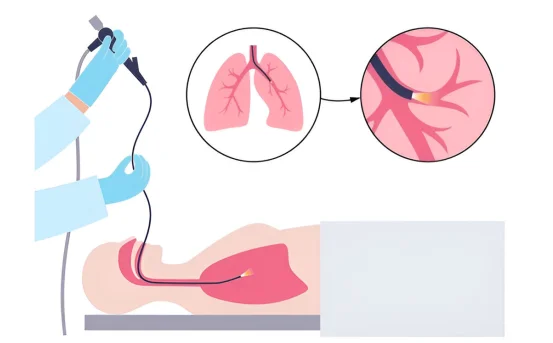Sinusitis is a common condition that affects millions of people each year. Often mistaken for a regular cold or allergy flare-up, sinusitis is an inflammation or swelling of the tissue lining the sinuses. While it may start with a simple runny nose or nasal congestion, the symptoms can become more complex and persistent if left untreated. understanding of the symptoms of sinusitis.
What Is Sinusitis?
Before diving into the symptoms, it’s helpful to understand what sinusitis is. The sinuses are air-filled spaces in the skull located behind the forehead, cheeks, eyes, and nasal bones. Their primary function is to produce mucus that keeps the nasal passages moist and helps trap dust, pollutants, and microorganisms.
Sinusitis occurs when these cavities become inflamed due to infection, allergies, nasal polyps, or a deviated septum. This inflammation blocks the sinuses, leading to a buildup of mucus and pressure, which contributes to the classic symptoms of the condition.
Common Symptoms of Sinusitis
The symptoms of sinusitis can vary depending on the cause, the sinuses affected, and whether the condition is acute or chronic. Below are the most commonly reported signs to watch for:
Nasal Congestion or Blockage
- One of the earliest and most persistent symptoms of sinusitis is nasal congestion. The inflamed tissues and trapped mucus narrow or block the nasal passages, making it difficult to breathe through your nose. This blockage can occur on one or both sides of the nose and may worsen when lying down.
Thick Nasal Discharge
- People with sinusitis often experience a thick, yellow or green nasal discharge. This mucus may drain from the front of the nose or down the back of the throat, known as postnasal drip. This symptom is a clear indicator of infection, as the body tries to expel bacteria or viruses from the sinuses.
Facial Pain and Pressure
Pain and pressure in the face are hallmark symptoms of sinusitis. The location of the discomfort usually corresponds to the affected sinus:
-
Forehead :- from frontal sinus infection
-
Cheeks and upper teeth :- from maxillary sinus infection
-
Between the eyes :- from ethmoid sinus infection
-
Behind the eyes and top of the head :- from sphenoid sinus infection
The pain often worsens when bending forward or lying down due to increased sinus pressure.
- Headache :- Sinus headaches are caused by the buildup of pressure in the sinus cavities. Unlike tension or migraine headaches, sinus-related headaches are generally felt in the forehead, cheeks, or the bridge of the nose. They may be dull and throbbing and can worsen during the day or after sudden head movements.
- Cough :- A lingering cough, particularly at night, can be a symptom of sinusitis. This occurs because of postnasal drip, which irritates the throat and airways. The cough may be dry or produce phlegm and can sometimes persist even after other symptoms have improved.
- Sore Throat :- When mucus constantly drips down the back of your throat, it can cause irritation and inflammation, leading to a sore throat. In chronic sinusitis, this irritation may be prolonged and lead to hoarseness or voice fatigue.
- Reduced or Lost Sense of Smell and Taste :- Sinus inflammation can block the olfactory receptors in the nose, affecting your sense of smell. Since smell and taste are closely linked, this often leads to a reduced ability to taste food and drinks. This symptom may persist even after other symptoms have started to improve.
- Bad Breath (Halitosis) :- The buildup of bacteria and mucus in the sinuses can produce a foul odor that escapes when breathing or talking. This can result in noticeably bad breath that doesn’t go away with brushing or mouthwash.
- Fatigue :- Dealing with a sinus infection can wear you down physically. The body’s immune response, combined with poor sleep due to congestion and coughing, often leads to overall fatigue and lack of energy. This symptom is especially common in chronic sinusitis cases.
- Fever :- In some cases, particularly with bacterial sinus infections, a mild to moderate fever may develop. A fever is the body’s natural response to fighting off infection. However, not all people with sinusitis will experience this symptom.
Acute vs. Chronic Sinusitis Symptoms
It’s important to distinguish between acute and chronic sinusitis because their symptoms, while similar, differ in duration and severity.
Acute Sinusitis
-
Duration :– Lasts less than 4 weeks
-
Cause :- Typically viral (from a cold)
-
Symptoms :- Sudden onset of facial pain, nasal congestion, and discharge
-
Resolution: Often clears up with or without medical treatment
Chronic Sinusitis
-
Duration :- Persists for 12 weeks or longer
-
Cause :- Often related to allergies, structural issues, or long-term inflammation
-
Symptoms :- Constant nasal congestion, facial pressure, fatigue, and reduced sense of smell
-
Resolution :- May require long-term treatment or surgery
When to See a Doctor
While mild cases of sinusitis may resolve on their own, you should consult a healthcare provider if you experience:
-
Symptoms lasting more than 10 days without improvement
-
Severe facial pain or swelling
-
High fever
-
Vision changes or confusion
-
Frequent recurrence of symptoms
Early diagnosis and treatment can prevent complications and improve your quality of life.
Conclusion
Sinusitis is more than just a stuffy nose it can significantly affect your daily life if not addressed properly. From facial pressure and headaches to persistent coughing and loss of smell, understanding the symptoms is the first step toward relief. If you’re experiencing multiple symptoms, especially for an extended period, don’t ignore them. Timely medical attention can help identify the underlying cause and guide you to the right treatment path, whether that’s medication, allergy management, or surgical intervention.
Listening to your body and recognizing these warning signs is essential. With proper care, sinusitis can be effectively managed or even prevented, helping you breathe easier and live more comfortably.























